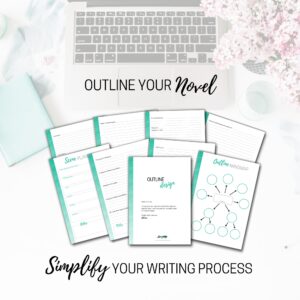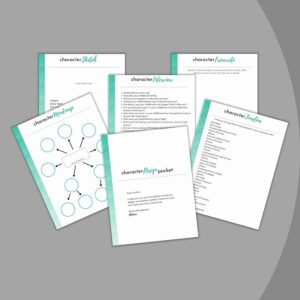
Point of View in Writing Fiction
You have a story inside you that you want to share. It’s just aching to get out, But how? How do you share this story with readers?
Point of view, or POV, can be tricky. POV can be defined as the character(s) through whose eyes readers experience the story. You must ask yourself, “How can I share this story in the most powerful way?” Choosing the right POV character is imperative because a different character will relate the story in a different way. You, as the storyteller, need to determine who can relate this story best to the reader. Whose story is it?
Decisions
Usually, the POV character is the main character, but that’s not always the case. Ultimately, it’s your story and only you can determine whose eyes the reader needs to experience it through.
Once you decide which character will be telling the story, you’ll also need to decide if it will be in first person (I) , second person (you), or third person (he, him, she, her). If you decide that more than one character needs to tell the story (mysteries and romances often employ more than one character POV) you’ll be using multiple points of view.
You’l also need to decide if this story is best told in present tense or past tense. This decision may influence which character experiences the story.
Whose Story Is It?
To help you determine whose story it is, you can ask yourself which character grows and changes the most. Usually, that’s the best character to tell the story because readers want to see how an experience changes a character. Why do/does the events/plot in the story matter to the character?
If you’re unsure whose story it actually is, try writing the first few scenes from different characters’ viewpoints and experiment between first, second, and third person. (Most writers shy away from second person because it presents such a difficult voice).
Once you know who is telling the story, and why that character is telling it, you can start writing your novel. However, you need to be very careful that you don’t slip into the wrong POV.
Unless you’re using omniscient (all-knowing, all-seeing), your character can only relate what he/she sees, hears, feels, thinks, remembers. If you find yourself describing what another character feels, sees, thinks, hears, knows, or remembers, you’ve had a POV shift or you are using the omniscient POV.
For example:
Jenny felt scared. She didn’t know where the noise was coming from and she feared it was the intruder. She looked over at her best friend, Angie, who was remembering when someone broke into her house. Warning: POV shift! If it’s in Jenny’s POV, she can’t know what Angie is remembering unless Angie communicates that to her somehow. If you’re in Jenny’s POV, you can only know what Jenny knows. Otherwise you’re head-hopping (or in omniscient).
It’s easy to slip out of POV when you first begin to write. Beware. As you write, ask yourself, “Can this character see, hear, know, remember, think, or feel this?” If not, you’ve slipped out of POV and need to rewrite it.
POV shifts can be jarring to a reader and you don’t want a reader to have any excuse to put your book down.
Point of View Choices
First person present: I walk down the long hallway shrouded in inky darkness. The air is thick. My heart thuds with staccato vibrations against my ribs as I near the door.
Second person present: You walk down the long hallway shrouded in inky darkness. Your heart thuds with staccato vibrations against your ribs as you near the door.
Third person present: She walks down the long hallway shrouded in inky darkness. Her heart thuds with staccato vibrations against her ribs as she nears the door.
First person past: I walked down the long hallway shrouded in inky darkness. My heart thudded with staccato vibrations against my ribs as I neared the door.
Second person past: You walked down the long hallway shrouded in inky darkness. Your heart thudded with staccato vibrations against your ribs as you neared the door.
Third person past: She walked down the long hallway shrouded in inky darkness. Her heart thudded with staccato vibrations against her ribs as she neared the door.
Research
Read, read, read in the genre you plan to write in so you can see how other authors handle POV. A popular trend in young adult literature is first person present tense. The reader is then experiencing the story as it unfolds deeply imbedded in the character’s persona. Hunger Games is written in this way. Middle grade novels like Out of My Mind are written this way as well.
Read a variety of books in your genre to really get a feel for the market, but don’t let that determine the POV you will use. Your story dictates what POV is best. Always go back to your story and how it can best be shared with readers.
POV is the vehicle that authors use to share their stories. Understanding POV is critical so that you can write a story where you, as the author, are invisible and where readers feel like they’ve been dropped into the world you’ve created. Take the time to determine which POV is best and then be consistent.
***Have you received my FREE course: Become an Idea Factory? You can click here to learn more about it. It’s a 7-day course delivered right to your inbox that helps you learn how to generate ideas. I know these techniques work because I use them! Find out more here.
***Do you need help organizing your ideas for your novel? I have developed an Outline Design Packet to help other writers organize their thoughts and arrange scenes so they don’t have to interrupt their writing time. This is what I use to outline my books.

***If you need some help creating your characters, download my free Character Design Packet here. It will help you create compelling, unforgettable characters that will make your story come alive.

***Need help writing your first chapter? Check out my course: Writing a Fantastic First Chapter.
In this course, Writing a Fantastic First Chapter, you will learn what components you need to include in your first chapter to hook readers. With examples and assignments, you will put into practice what you learn and you can ask questions all along the way. A first chapter checklist, a character sheet, and a character interview are all included as downloads.
Don’t try to write a first chapter in the dark. This course will shine the light on what elements you need to help you navigate writing the all-important first chapter, so you can win over readers.
***Do you already have a manuscript? If you can’t afford an editor, you might be interested in Pro Writing Aid Writing Software. This writing software helps you improve your writing to be the best it can be. It’s like having your own private editor for a fraction of the price. You can try it for free for 2 weeks. You can click here to learn more about it.
***This post may contain affiliate links which may compensate me with no additional cost to you.






